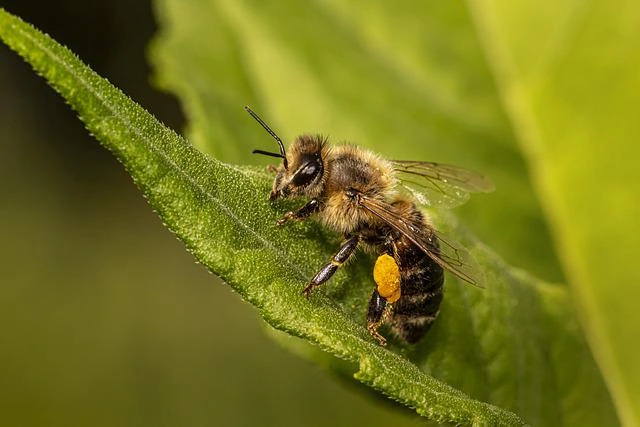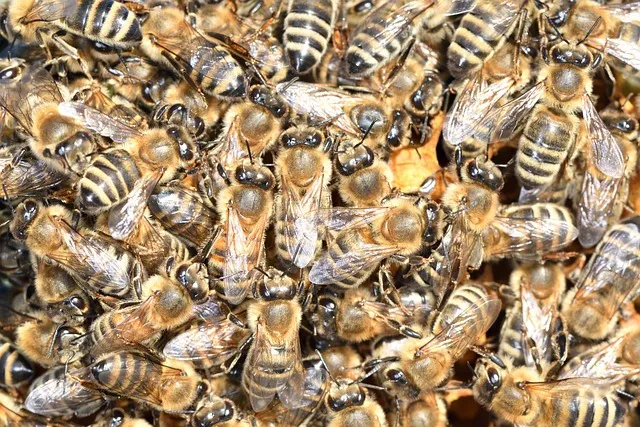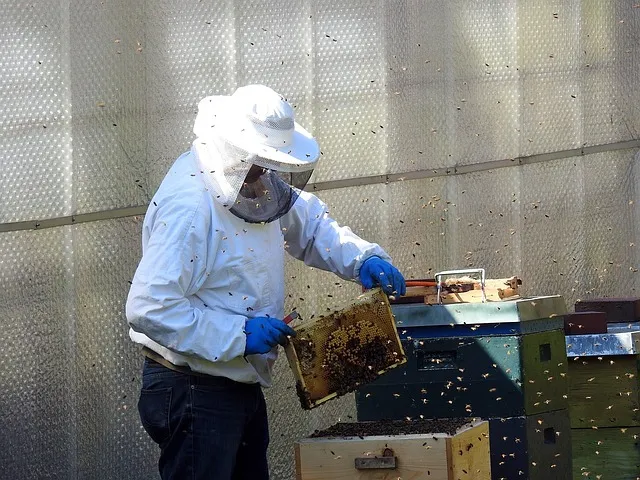How to Identify Honey Bees? Honey Bee Identification Guide
Honey bees are a force in the bee world: we know them for their massive colonies, foraging habits, and great products, not to forget the nasty stings.
While they are very vital in our ecosystem, they are a major concern to homeowners, especially in summer, as they tend to get a nest in any convenient place. This can be in ceilings, garages, cracks, unused chimneys, etc. Removing honey bees and their nests can be a great hassle due to their stinging nature. They also built honeycombs that must be removed to prevent other colonies from establishing a new home. While it may not be easy to identify honey bees, here are some of the ways you can single them out.
Similar Articles you may like to read –
Is there a King bee?
How to Identify the Queen Bee
Can you mix bee breeds?
How many supers should a hive have?
Insect anatomy
Like other insects, honey bees have three major parts: head, thorax, and abdomen. They have 3 pairs of legs that are connected to the thorax. Even, before proceeding to other aspects, by checking these body parts you will know whether you are dealing with an insect.
Hairy bodies
Honey bees have hairy bodies and heads: they even cover the eyes. The hairs are short, and you only see them when looking at them closely. They help to collect pollen grains and transfer them from flower to flower while foraging. This is how plants get pollinated.
Color
Honey bees are mainly golden brown and black with yellow or pale orange stripes that are visible on the abdomen. The head is nearly all black.
Swarming in massive Numbers
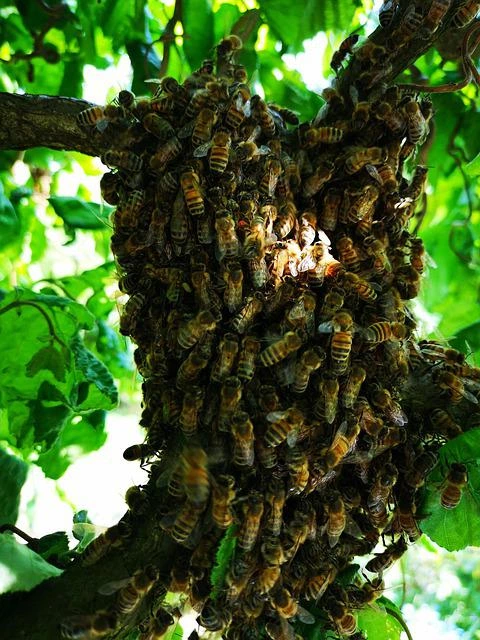
Swarming is a unique tendency for honey bees that help to distinguish them. A swarm of honey bees is usually densely packed with thousands of individuals. Again, they are the only stinging insects that swarm in this manner.
Flying speed
Honey bees fly very swiftly. The usual speed for a worker is 21-28Km/hr. While they are loaded with pollen and nectar, the speed reduces to about 17Km/hr. This is one attribute that distinguishes honey bees and yellow jackets. The latter has a slow and hovering flight pattern.
Activity
Honey bees move from flower to flower and then transport food resources to their colonies. They are also attracted to sweet scents. You will also see them collecting water in pools.
Nesting Habits
This entails the preferred nesting habit of honey bees. They will establish their colony in a hive or make a home in hollow spaces or crevices. They will never nest on the ground. They possess barbed stingers, which they use for defense when provoked.
The Eyes
Honey bees have two large eyes( compound eyes) on the sides of the face, which are visible to human eyes. They look like an eclipse shape when viewed from the side. The simple eyes ( ocelli) are only visible with close scrutiny or the use of magnifying lenses. They are located at the top of the head in a triangular pattern. You may also want to read an article on “ How many eyes do honey bees have?”.
Wings
Honey bees have two sets of wings, a total of four wings. The four wings may not be visible more so when the bee is resting. The hind wings are usually smaller.
Pollen Carrying
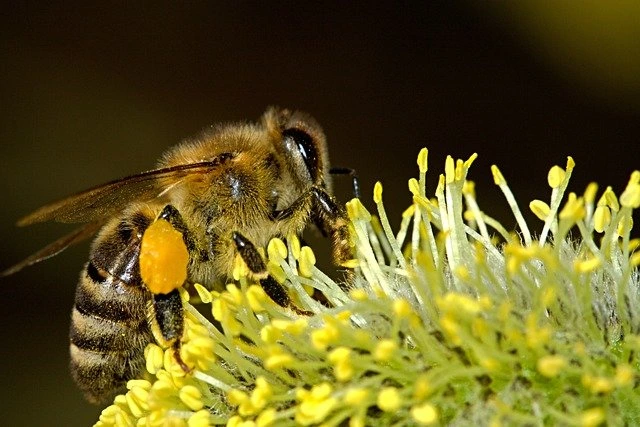
Honey bees forage for nectar and pollen. They store nectar in a honey stomach while pollen is stacked in pollen baskets located on their hind legs. These are visible and appear as yellowish, greenish, grayish, purplish or whitish loads on their hind legs. You can read more on pollen on the article” What do bees do with pollen?”.
More articles you may like to read –
Types of Honey Bees, Honey Bee Stocks
How many eyes does a honey bee have?
How far do honey bees travel from the hive?
Do Bees Have Lungs? How do honey bees breathe?
Body Shape
The body shape is one of the easiest ways to identify a honey bee from other bee species. They have a barrel-shaped body without a thin middle section between the thorax and abdomen. The two parts( thorax and abdomen) look like one complete piece.
Sociality
Honey bees form social groups known as colonies. Members of the colony( queen, workers, and drones) work together to raise young ones, collect and store food, and defend the colony. They overwinter in a cluster and rebuild their colony in spring. They can live up to 80, 000 individuals in a colony.
Size
The size of the honey bees depends on caste. The queen bee is the largest in the colony, with a size ranging from 20-25 mm. Drone bees are second in size ranging from 18-20mm. The workers or foragers are the smallest. Their size ranges from 9-15mm. They are the bees that you see foraging in your garden.
The Buzzing Sound
The honey produces a unique buzzing sound while flying due to the rapid wing beats as they fly in the air.
Antennae
They have two long antennae that provide a sense of touch, smell, taste, and a unique form of hearing.
FAQS
How can you tell the difference between a worker bee and a drone?
Drone bees are slightly larger than worker bees. The small size of the forager helps them to move swiftly from flower to flower as they collect food resources. The drones also have larger compound eyes to help spot the queen while mating. Again, you will also see the foragers in the gardens or flowers. Drones only fly to drone congregation areas to wait for virgin queens.
What do the young honey bees look like?
They resemble adult bees. After completing their development, they emerge from the brood cells while fully grown.
What are some of the bee species and insects that resemble honey bees?
Bee species that look like honey bees include bumble bees, carpenter bees, and yellow jacket wasps. You can easily confuse them with honey bees. Small wasps markings on their abdomen are confused with bee stripes. Hoverflies also look similar to honey bees since their bodies are hairy and have markings like honey bees. You can distinguish the two by the number of wings: a hoverfly has two wings while a honey bee has 4. Honey bees are a bit smaller than bumble bees.

